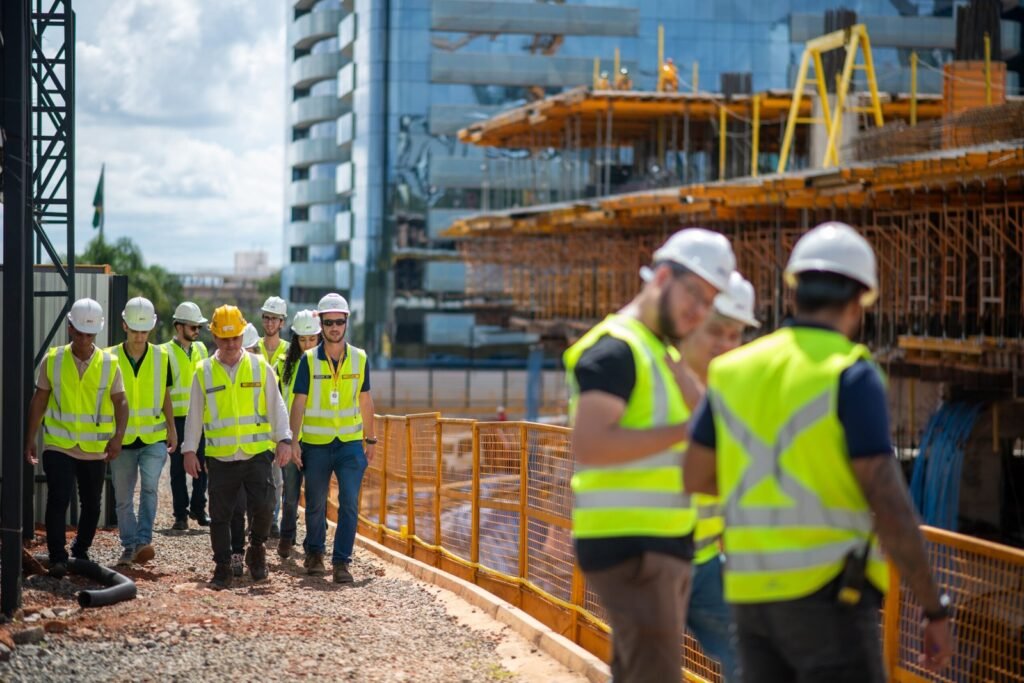The Lotus Tower has become a symbol not only of innovation and sustainability in the construction industry but also of knowledge exchange and the development of future professionals. In recent weeks, the project welcomed university students from the University of Brasília (UnB) and the University Center of the Federal District (UDF) for technical visits guided by Lotus professionals.
On-site construction visits are essential for Architecture and Engineering students, as they create a vital bridge between academic theory and professional practice. Seeing the Lotus Tower project come to life allows students to understand real-world challenges involving logistics, safety, sustainability, and the application of technical standards—topics often difficult to grasp through blueprints or textbooks alone.

This field experience transforms abstract concepts—such as the structural behavior of materials and team coordination—into tangible, practical knowledge, preparing future architects and engineers to make informed and effective decisions once they enter the job market.
On Site
The most recent visit took place in early November, with around 30 Civil Engineering students from UDF, accompanied by Professor Nataniel Wontoon from the Concrete Structures course. Our engineer, César Leandro, led the group, presenting key technical and construction aspects of the project—such as the sequencing of concrete pours, the flying table formwork system, the assembly of welded reinforcements, and site organization, including proper waste management.
“It’s essential to open our construction sites to students, as a project of the Lotus Tower’s scale represents a unique learning opportunity. In fact, we’ve even had cases where visits like these led to internship hires,” highlighted César.
In addition to the UDF visit, the project also recently welcomed students from the University of Brasília (UnB), accompanied by Professor Ludmila Santos from the High-Rise Buildings course. This visit included eight students and was guided by our architecture coordinator, Hannah Brandino, focusing on design challenges and the solutions applied to vertical construction.

These initiatives reinforce Lotus’s commitment to education and the technical development of the next generation of engineers and architects, bridging the gap between academia and the practical realities of construction. “By organizing these visits, we build a bridge between theory and practice. A technical visit to a project like the Lotus Tower acts as a catalyst for this process, allowing abstract theory to take real form and scale. These on-site experiences are indispensable for shaping professionals who think innovatively and execute with precision,” emphasized Lotus co-founder Ruy Hernandez.


